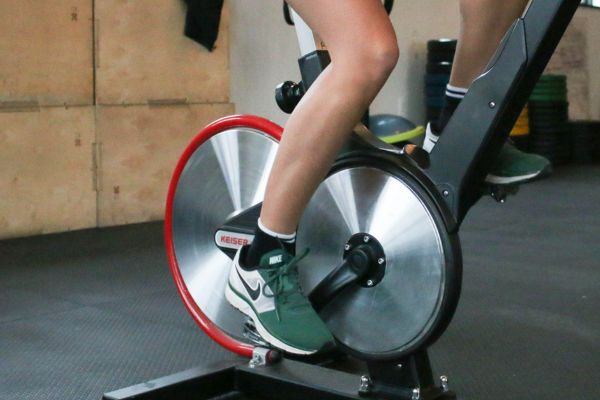
Nothing stops you from doing workouts at home
When someone hear about workouts at home, they immediately think it’s a useless exercise and difficult to begin. It can be really intimidating to start a new fitness regimen, regardless of whether you’ve made the decision to start working out for the first time ever or made the decision to prioritize it after taking a long break.
When you consider other variables like having a family and a demanding full-time work, it’s understandable that you wouldn’t want to spend a lot of money on a monthly gym membership if life could frequently come in the way. Fortunately, you may start an efficient exercise program from the comforts of your home in a variety of ways.
Every major muscle group in your body can be worked out every day by doing workouts at home.
You can maintain your fitness lifestyle and gain muscle easily by doing workouts at home without going to the gym for only a few minutes each day. You only need your body weight to do all of the exercises; no equipment or coach is required.
Let’s begin with the fundamentals’ smart tips. You should include strength and aerobic training in your workouts at home. You may use your body weight alone or with hand weights while doing strength training. Weights will become your new best buddy as you gain strength and want a greater level of challenge.
However, avoid forgetting to do cardio. It remains an essential component of any workout regimen at home. Focus on HIIT cardio exercises a couple times a week for the best results in terms of muscle growth.
Start small with something you can accomplish anywhere if you really want to achieve with a long-term program. Include this little commitment in your bedtime and morning rituals, just before you do something you would never do otherwise.
For instance, do 20 push-ups and 20 squats every morning and evening before cleaning your teeth.
Your body will eventually get addicted to the action, making it difficult to begin and finish your day without it. If you don’t like to have a short session in the morning just start with one hour as everyday routine.
Thus, how often should you exercise at home?
Doing strength training two or more days a week is the best way to increase muscle mass. Thus, begin with two or three days of cardio, two days of full-body weight training, and two days of recovery.
When you gain strength, you might attempt alternating between upper- and lower-body exercises on a fourth weight day. Additionally, be sure to set aside at least two days a week for your body to relax and recuperate. Your strategy can be like this:
| Fitness level | Exercises |
| beginner | 2–3 days a week full-body strength training + 2 days cardio |
| Intermediate | 3–4 days a week strength training + 3 days cardio |
| Advanced | 4–5 days a week strength training + 3 days cardio |
The schedule above is a bodyweight workout at home, and it can be fit for beginner, intermediate, and advanced exercisers, so begin where you feel prepared and work your way up from there.
Strength training such as squats, lunges, and hip hinge movements However, pushing exercises such as chest and shoulder presses and pulling exercises such as rows and pull-ups should be prioritized for strength training.
The muscles that are prone to a lot of wear and tear will benefit most from these complex workouts since they concentrate on improving the fundamental movement patterns of the human body. Additionally, all of these exercises target many muscle groups at once, so try to make them efficient uses of time.
To get the most out of a strength exercise, it’s critical to press your muscles to exhaustion, which is the point at which you feel your muscles burning and may only have a few excellent repetitions left.
You may do this using dumbbell, resistance bands, or your own body weight. If you have the equipment, you may either increase the intensity by using heavier weights or resistance levels. Alternatively, you may attempt an advanced exercise variant, slow down your motions, or increase the repetitions and sets for body-weight exercises to make the workouts at home more challenging.
Even if you are working out at home, give yourself a chance to take a few days’ rest. Allow yourself to recuperate and relax for one or two days per week! The number of recuperation days that each person needs to include in their fitness routine may vary, mostly depending on how long and how hard they work out.
You will need extra time to recuperate in between your tougher and longer exercises. Rest days may be anything from whole days spent doing nothing to chances to work out at a reduced level, such as yoga, foam rolling, walking, or stretching.
What is the most effective workout at home?
These four basic bodyweight workouts at home will train your whole body. For beginners, finish two sets of ten to fifteen repetitions of each exercise, pausing for thirty to one minute in between sets. This circuit is a fantastic beginning workout and should take 15 to 20 minutes.
Bridge
Use a bridge to engage your posterior chain, or the word for your body’s rear. This is an excellent warm-up activity.
Instructions:
- With your feet flat on the ground, your knees bent, and your arms out by your sides, take a back position.
- Squeeze your glutes at the peak of the movement as you lift your bottom off the ground and extend your hips completely while bracing your core and pushing through your feet.
- Restart from the beginning position slowly, then do it again.
Chair squat
To strengthen your legs and core and to facilitate daily mobility, squat. Learning with a chair under you will aid in perfecting form.
Instructions:
- Place your feet shoulder-width apart and put your toes slightly out in front of the chair.
- Stretch your arms out in front of you while hinging at your hips, bending your knees, lowering your back, and down till your bottom hits the chair.
- Take a deep breath and raise yourself back up to your starting posture.
Stationary lunge
Take a stationary lunge and target your quadriceps, hamstrings, and glutes.
Instructions:
- With your right leg in front, divide your stance. Your left foot should be up on its toes, and your right foot should be level on the ground.
- Lean forward and lunge, bending your knees until your right thigh is parallel to the floor.
- Step up with your right foot to take a step back to the beginning. After completing the specified number of repetitions, swap legs.
Straight-leg donkey kick
Donkey kicks are a great way to tone your glutes.
Instructions:
- Assume a four-pointed position, lining up your hands with your shoulders and your knees with your hips.
- Maintaining a straight back, extend your right foot towards the hypothetical wall situated behind you while maintaining a straight leg.
- Throughout, you should keep your foot flexed, with your toes pointed down toward the floor. Make sure your hips are level with the floor. Grasp your rear end firmly at the summit.
- Get back to where you were before. For the required number of repetitions, repeat. On the opposite leg, repeat.
To finish a challenging workout at home that leaves you feeling powerful and weary
you don’t need sophisticated equipment. Attempt squat overhead presses at home since they are a basic but powerful exercise. Place a dumbbell next to each foot while you stand with your feet hip-distance apart.
Inhale as you bend your knees and stoop down to pick up the dumbbells. Put your weight on your heels. Exhale as you stand up and do an overhead press by pushing the dumbbell all the way up.
Banded kickbacks are another workout at home that are using to build and activate your glutes. Loop the band around your left foot while you’re on all fours.
Holding onto the grips firmly, gently kick your left leg back while contracting your stomach and using your left glute. Go back to the beginning and repeat each leg ten to fifteen times. This exercise is challenging and it’s up to if you would include to your routine or not.
Lastly, exercise videos, live classes, downloading fitness apps, and going outdoors are all options available for workouts at home. You may combine whatever exercises you choose, such as yoga and cardio, to see what suits your needs best. For more impulsive exercisers who want to switch things up, this is fantastic.
Therefore, exercising at home allows one to do it at their own comfort level, preventing discomfort. Furthermore, working out at home allows those who perspire a lot while exercising to wear skimpy or light clothing that would be unpleasant to wear to the gym.
In general, exercise is necessary to maintain fitness and good health. A workout at home has more advantages, despite the fact that one can do both. Because there are no commutes or crowds while working out from home, families may spend more quality time together.
Most importantly, for those who find it uncomfortable or unpleasant to work out with others, having a home gym removes their anxieties. As a result, working out at home is more affordable, practical, and pleasant.
References:
“45 of the Best Exercises to Boost Your Home Workout Gains.” Men’s Health, 2 June 2023, (1)
Benton, Emilia. “How to Start Working Out at Home | POPSUGAR Fitness.” POPSUGAR Fitness, 26 Jan. 2022 (2)
Fetters, K. Aleisha. “Everything You Need to Know About Working Out at Home.” EverydayHealth.com, 7 Jan. 2023, (3)
Curley, Bob. “Gym Rat No More: 18 At-Home Exercises to Build Muscle.” Greatist, 18 Dec. 2020, (4)


